4 Tips in Raised Garden Bed Soil Preparation
Many people have told me that the cost of soil, especially in their raised garden beds, was the most surprising expense in their first garden. It’s hard to calculate how much raised bed soil you will need and the cost adds up!
In my Free Raised Bed Soil Options Guide, I give you tips on how to fill a raised bed garden on the cheap. I share ten different soil combinations that fit a variety of budgets. But first, before you dive into those details, let’s take a big-picture look at how to choose your raised bed soil in today’s episode of the Beginner’s Garden Podcast and in the article below.
What Soil to Put in Raised Beds: 4 Tips to Help You Decide
Before you go out and buy any soil or compost, here are 4 things to think about to get exactly what you need for your garden on your budget. Don’t waste your money on something you don’t need! If you’ve wondered, “How do I start a raised bed garden?” Then these tips will get you started!
Tip #1: Choose the highest quality that you can afford.
The garden experts say that you should never skimp in this area. The rest of us have budgets to live within. But whatever our budgets allow, we should prioritize investing in the highest quality soil that we can afford. The truth is that you get what you pay for. If you invest in quality soil, you will reap a better harvest.
One year I did a test. I had different soil in each of my two raised beds with Roma tomatoes. The bed with the better soil produced 5 times as many pounds of tomatoes as the bed with soil that wasn’t as great.
Fascinated by differences in soil quality, I tested three common raised bed soil mixes to find astounding results. Quality matters!
So if you have a choice of one bed with great soil and two beds with medium quality soil, you might be better off with just one bed. Higher quality soil will also produce healthier plants so that you’re not always fighting off disease.
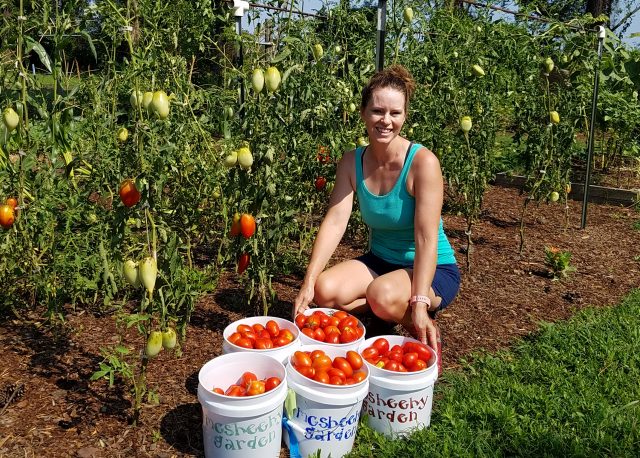
Tip #2: The taller the raised bed, the more soil you will need.
I’ve seen people recommend raised beds up to 18” high. While it is convenient to not have to bend down as far to work your garden, and honestly, they are very beautiful, remember that the height comes with a cost.
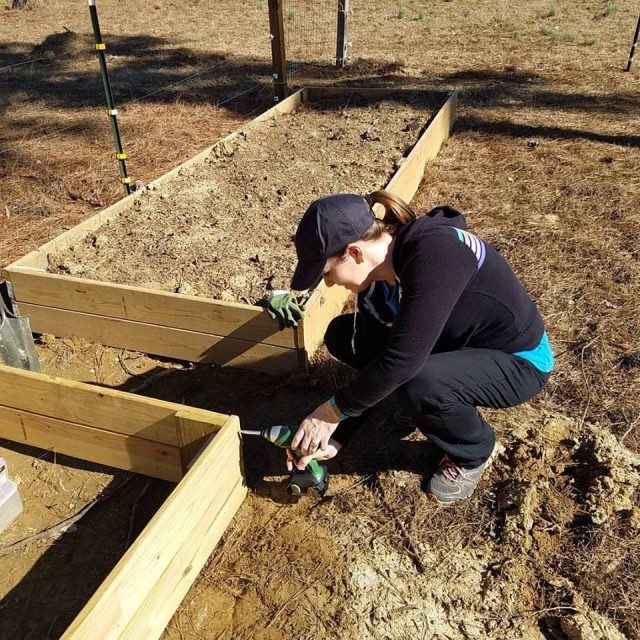
How deep should a raised bed garden be for a gardener on a budget? I have found that my 10” and 12″ beds do really well for my crops and I don’t have to pay for all the soil it would take to fill another several inches (trust me, those inches add up in total volume).
If you need to know how much soil to obtain to fill your raised bed, click here for an easy to use soil calculator.
Related: How to Build a Raised Bed from an Old Fence
Tip #3: Add native organic material
I add sticks, pine cones, and other organic material to the bottom of my raised beds before I fill them. The organic matter takes up space in my bed and decomposes to add nutrients to the soil for next year.
This is not the same as adding rocks to the bottom of your containers. There was a time that people recommended adding rocks to the bottom of your potted plants to help with drainage, but this has been proven to actually prevent drainage. But my idea of adding sticks and other organic matter is different and should not affect drainage in that way.
Tip #4: Scrutinize your Soil Sources
Bulk compost and topsoil
Be very careful with what you buy and ask a lot of questions. Don’t assume that it’s good quality and hasn’t been contaminated. I’ve heard too many stories of people buying bulk soil and then their garden failed. Later, they found the soil or compost that they had purchased had been tainted with herbicide. These herbicides are designed to kill plants so we do NOT want them in our gardens.
If you buy compost from your local nursery, ask where it is produced. If it is produced on site, then they will be able to know what is in it. While you’re there, really inspect the soil. Run your hands through it, smell it, make sure that it looks and feels and smells like good, rich soil.
You can also ask for a sample to take home and do a bioassay test.
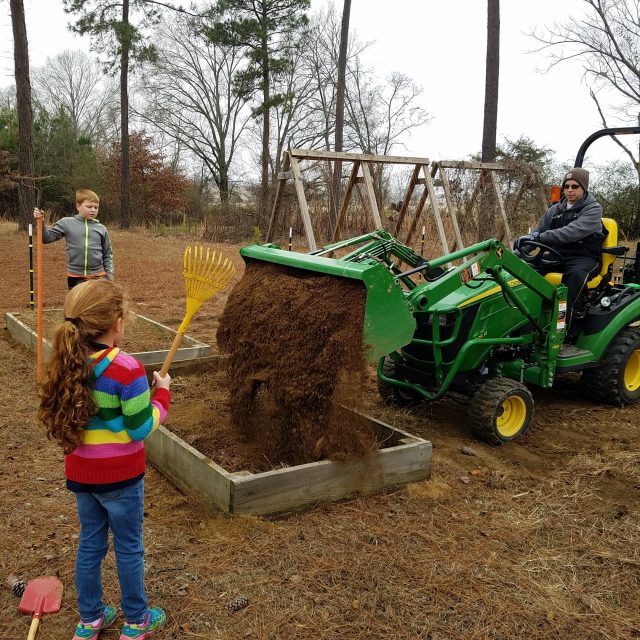
Bagged compost and topsoil
When it comes to bagged soil, this is not a place to skimp. Look for a seal that says “OMRI,” which means that this soil is certified organic. If you are trying to be an organic gardener, I would steer clear of the bagged soil with synthetic fertilizers. While it may be great for the first year, it will hurt your soil quality in the long run.
I would also caution you against using too much of the inexpensive, composted cow manure. I’ve mentioned before that I am very frugal so I have purchased this before. And it was okay if I had a little bit in my bed, but if I had very much my plants did not grow well.
Make sure to check out my downloadable soil guide here. We will dig deeper into what you need for your garden and your budget. Do you have native soil that you can use? Do you know how much soil you’ll actually need? How much can you spend? We’ll talk about all the details.
Do you get overwhelmed with garden planning?

Subscribe here for my best tips to plan your garden in just 7 days -- all for FREE.
Plus, I'll send you my "In the Garden E-mail" on Fridays, periodic updates on garden resources relevant to you, and you'll receive access to my entire bank of free garden downloads!
You are also agreeing to our privacy policy.

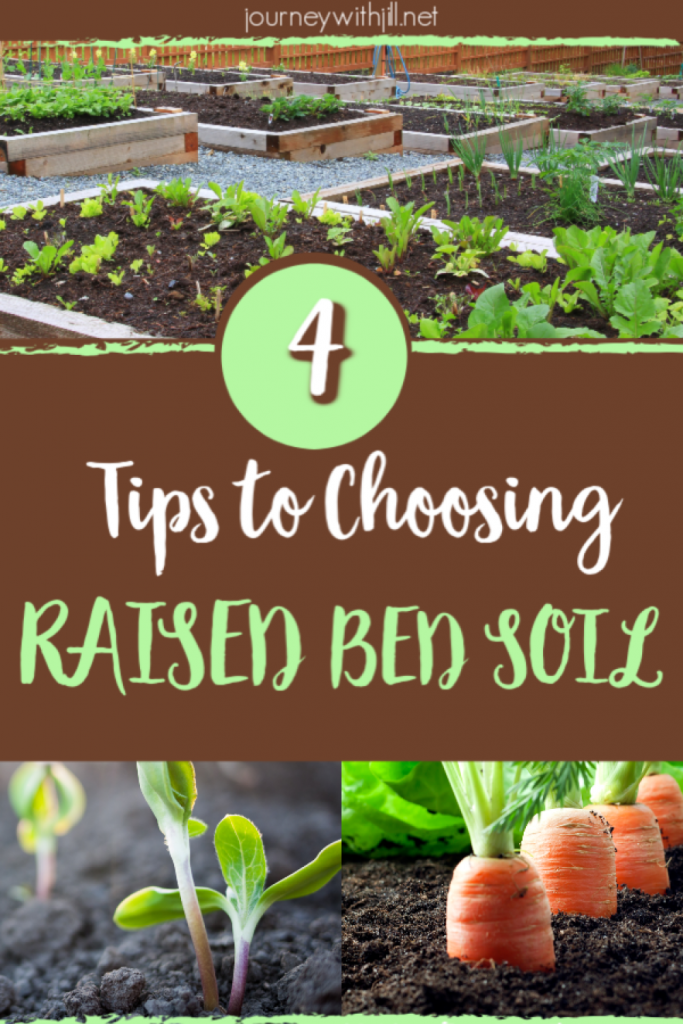
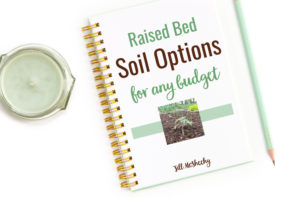
Can you plant orka on a above ground garden raise bed?
Yes, you can, but I recommend making sure the bottom of the raised bed opens up to the soil beneath. Okra develops a long taproot and it needs the extra space — deeper than most plants.
Thanks for the article…very helpful! I am starting my first raised vegetable garden and need the help 🙂